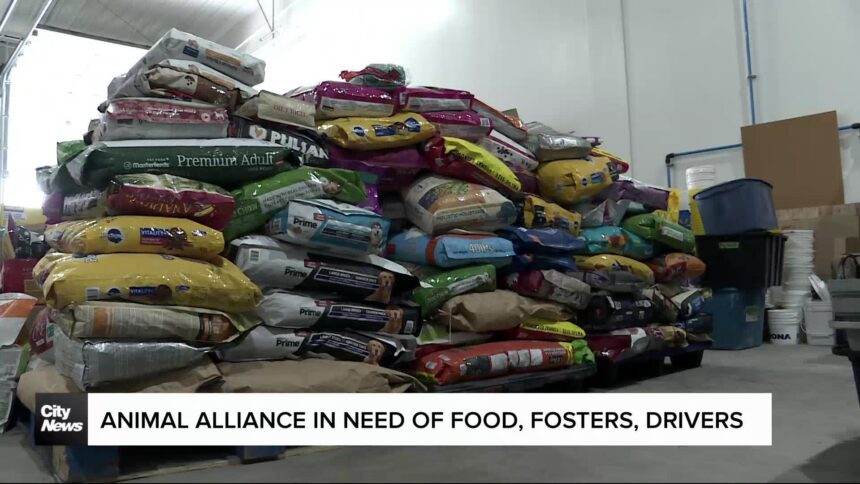As the bitter northern winds pick up across Manitoba, it’s not just humans bracing for another harsh winter. Hundreds of stray and abandoned dogs face dire circumstances in remote northern communities, where resources to care for them have reached a critical low point.
I spent last weekend with volunteers at Manitoba Underdogs Rescue, watching them unload a van of twelve emaciated dogs from a fly-in northern community. What struck me wasn’t just the animals’ condition, but the rescue coordinator’s exhaustion as she explained their predicament.
“We’re completely overwhelmed,” said Jessica Hansen, executive director of the non-profit organization. “Our food supplies are nearly depleted, and we have more dogs needing emergency evacuation than we’ve ever faced during my eight years with the rescue.”
The crisis facing animal welfare groups in Manitoba’s north reflects a perfect storm of challenges. Community resources stretched thin by pandemic recovery, inflation driving up pet food costs by nearly 18% since last year, and unusually early winter conditions have all contributed to the current emergency.
According to data from the Manitoba Animal Welfare Coalition, approximately 3,400 dogs were rescued from northern communities last year alone. That number is projected to increase by at least 25% this winter, based on current trends and intake rates reported by the province’s largest rescue organizations.
The Churchill Northern Studies Centre documented the relationship between economic hardship and companion animal abandonment in remote communities, finding that when household budgets tighten, pet care often becomes unaffordable. Their 2023 community survey revealed 64% of northern Manitoba residents reported difficulty affording pet food and veterinary care.
“These aren’t just statistics – they’re living, breathing animals facing starvation and freezing temperatures,” said Robert Clearsky, Indigenous community outreach coordinator with Norway House Animal Rescue Network. “We’re seeing more pups abandoned as families simply can’t afford to feed them.”
The provincial government allocated $250,000 toward northern spay/neuter initiatives last spring, but rescue organizations argue the funding arrived too late to prevent this season’s population surge. The Manitoba Veterinary Medical Association estimates at least 15,000 unsterilized dogs currently live in the province’s northern communities.
During my visit to the rescue’s overcrowded facility, volunteers were preparing emergency food parcels for community members attempting to care for strays locally. These care packages help prevent abandonment, but supplies are running critically low.
“We’re down to our last 500 pounds of kibble,” Hansen told me, gesturing to nearly empty storage shelves. “That sounds like a lot, but it won’t last the week with our current numbers.”
The immediate needs are straightforward: shelf-stable dog food, temporary foster homes, and financial donations for emergency veterinary care. Local businesses have begun stepping up, with Winnipeg-based Northern Outfitters pledging to match donations up to $5,000 through December.
What makes this situation particularly challenging is transportation logistics. Many affected communities are only accessible by air or winter roads, making the delivery of supplies both expensive and weather-dependent.
“We’re planning our next airlift for next Tuesday, weather permitting,” explained pilot Michael Terrance, who volunteers with the rescue. “Each flight costs roughly $3,800 in fuel alone, but without these missions, dozens more dogs won’t survive the month.”
The provincial animal welfare office acknowledged the crisis in a statement Wednesday, confirming they’re “evaluating additional emergency funding options” but provided no specific commitments or timeline.
For households considering helping, even temporary fostering makes a significant difference. The rescue reports needing at least 45 additional foster homes to manage current numbers, with commitments ranging from two weeks to three months.
“You don’t need special skills or a perfect setup,” Hansen emphasized. “Just a warm space and willingness to help an animal transition to their forever home.”
Community response has started building momentum. Yesterday’s emergency supply drive at St. Vital Centre collected over 2,000 pounds of donated food, but organizers estimate they’ll need triple that amount to address immediate needs.
The situation highlights the interconnected challenges of remote community support, climate resilience, and animal welfare. Local veterinarian Dr. Amanda Kowalchuk points out that these annual crises will continue without systemic solutions.
“We need sustainable, community-led programs that address underlying issues,” Kowalchuk said. “One-time emergency responses keep animals alive, which is crucial, but prevention requires long-term investment in northern communities.”
For now, the focus remains on immediate survival. Rescue staff are working around the clock, with some volunteers housing up to eight dogs in their personal homes while foster placements are arranged.
Tomorrow, another transport of approximately 20 dogs is expected from Cross Lake. Where they’ll go remains uncertain as the rescue scrambles to find space and resources.
As winter deepens across the province, the race to save these animals intensifies. For Manitoba’s northern dogs, community generosity may be their only hope against the coming storms.






